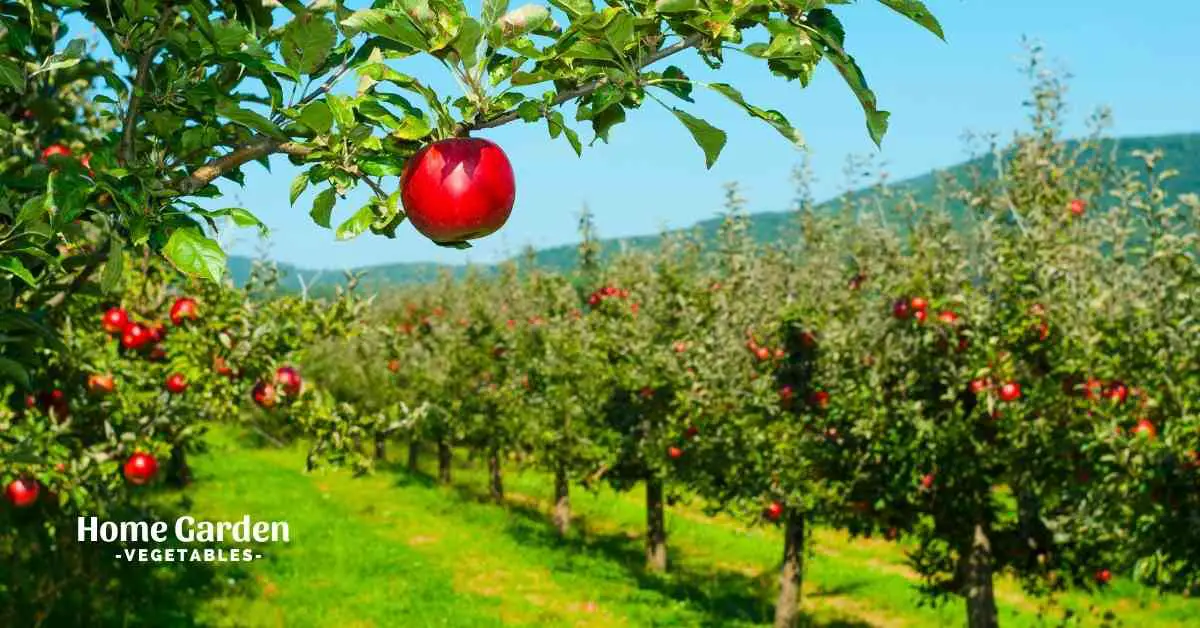Apple tree is a beautiful sight in any garden. Sitting in its shade, an apple in one hand and a book in the other reminds you of a fairytale setting. But as soon as you notice that unsightly white fuzz developing on the branches, you know something isn’t right. What is the white fuzz and how do you treat it? There can be few possible causes for the appearance of the white fuzz. You need to figure out the exact problem your tree is facing and then address it accordingly.
Possible Causes Of White Fluff And Their Management
As already highlighted, the white fluff on your apple tree can come from either of multiple sources. Let’s look at the possible causes and how to manage them and restore your tree:
Reader Poll: What online courses would interest you?
Powdery Mildew
One of the most likely causes of white fluff developing on your apple tree can be powdery mildew. Powdery mildew is a fungal infection that affects many plant species, along with apple trees. It’s caused by the fungus Podosphaera leucotricha and affects different kinds of apples, including cultivated varieties, wild apples and crabapples. Besides the branches and leaves, the disease also attacks buds, blossoms, new shoots and the fruit. Under severe conditions, the yield can drop considerably.
- Symptoms
You’ve already suspected powdery mildew because of the white fluff. But since this can indicate a variety of problems, you need more specific symptoms to establish that it’s really powdery mildew before you can treat it for the disease.
You will notice white spores on buds and a delay of a few days in the opening of the buds. Leaves and flowers will be covered with fungal spores that appear as a light gray or white powder. Other than the white, powdery layer, the leaves become narrow, brittle and curl upwards. If the fruit becomes infected, they will develop a web-like russet, with a powdery white coating of spores.
Subscribe to our newsletter!
- Control
Prune out any buds or shoots that show white spores to prevent the disease from progressing to the rest of the branches. Destroy the pruned shoots and disinfect the pruning shears as soon as you’re done. Don’t use the pruning shears on any other part of the same plant or a different one unless you have carefully disinfected it since there’s a risk of spreading the fungal spores.
If pruning doesn’t work and the symptoms reappear on the new shoots, you may have to apply fungicides, but be sure to choose products that are labeled for fruit trees. Neem oil and jojoba oil are good choices since they are less toxic and, thus, less harmful to the environment. You may have to repeat the application every 2 weeks for the treatment to be effective.
- Prevention
Controlling the disease once it occurs is almost always more difficult than preventing the problem from occurring altogether. Planting the tree in full sun and ample air circulation will make it less likely for powdery mildew to attack your tree. Keep the tree well pruned to maintain an open canopy for air circulation and avoid using excessive fertilizers, especially late in summer since any new shoots that fertilization triggers at this time is more likely to become infected.
Woolly Aphids
Another possible culprit of white fluffy fuzz on apple trees is woolly aphid. It’s a common pest of edible and ornamental apple trees. It produces a waxy white fluff on the trees as it feeds which is often mistaken for fungal growth. Woolly aphid is a black aphid that has its body covered in white, waxy material and feeds on the bark of the tree. Let’s take a closer look at what the damage looks like and how to get rid of the problem.
- Symptoms
Parts of the trunk and woody stems are covered in white, fluffy, waxy material, secreted by the black pests as they feed. By mid summer, the insects progress from the old woody stems to younger shoots. The infested shoots form a soft lumpy growth that often splits on exposure to frost, leaving the tree prune to apple canker. In severe infestations, the pests may even enter through the calyx end of the fruit.
- Control
Wooly aphids are difficult to control in tall trees since the entire plant needs to be treated for the efforts to be successful. Check the bark and branches for signs of wooly aphids. Scrub the infected portions with a brush and soapy water. Spray the pests with a strong jet of water to break them loose from the branches. Spraying with insecticidal soaps is also an effective control against aphids. Encouraging natural predators in the garden, including ladybirds, lacewings, and Aphelinus mali, a parasitic wasp, can also help reduce the population of wooly aphids. Growing flowers and limiting the use of pesticides can help encourage beneficial insects in the garden.
- Prevention
Old pruning cuts are the most susceptible to attack by aphids. Planting resistant varieties and painting pruned branches with a tree coating formula can help prevent infestations in the first place. Encourage insect-eating birds and beneficial insects in the garden by growing flowers and installing bird feeders to keep the pests at bay.
Conclusion
Now that you know for sure what’s causing the white fluff on your apple tree, it’s time to take action. Choose suitable controls, depending on what you’re up against before the problem becomes serious and affects the yield.

